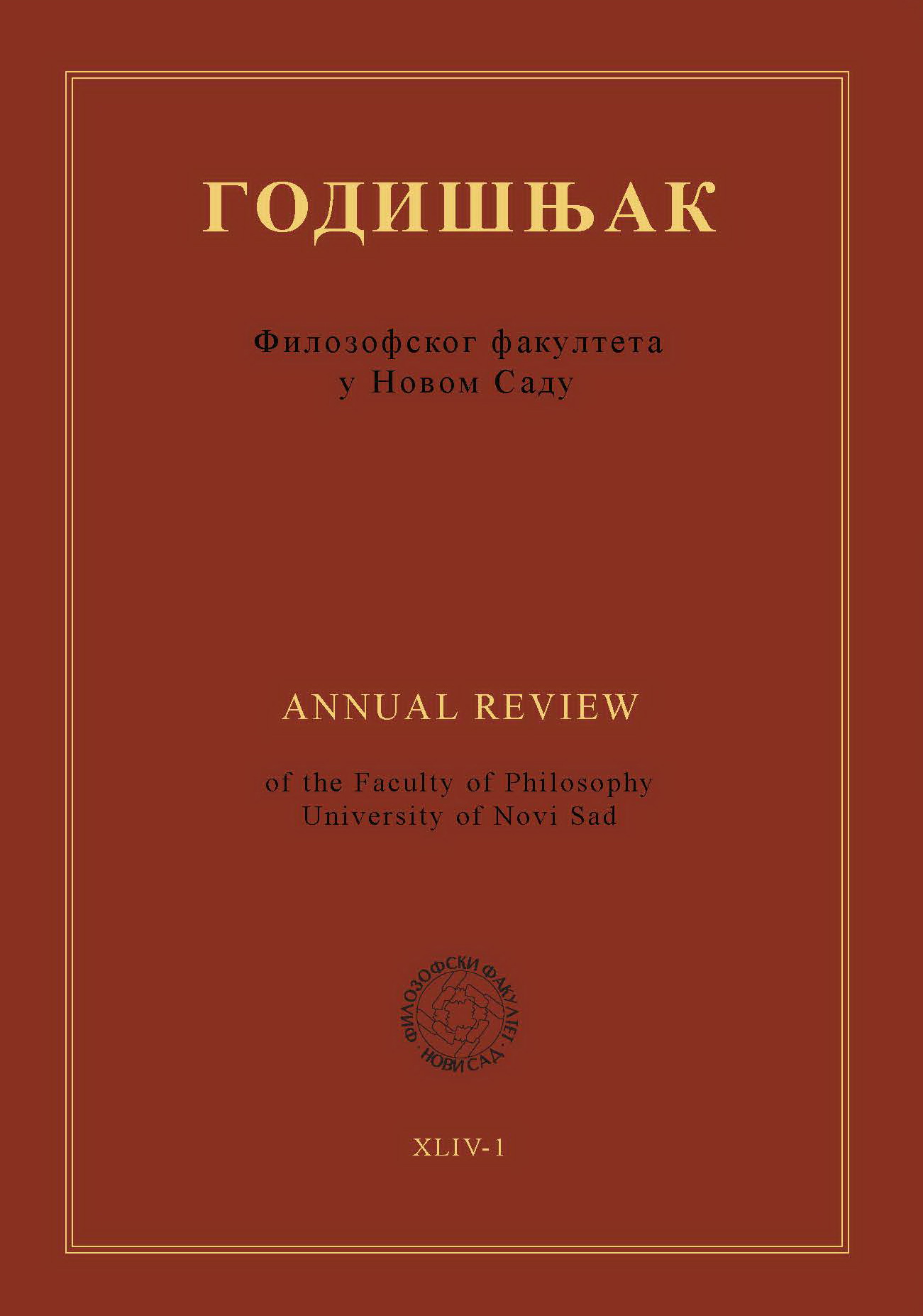PROFIL LIČNOSTI I MOTIVACIJA NADARENOG UČENIKA ENGLESKOG JEZIKA
Главни садржај чланка
Сажетак
Rad ispituje afektivno-motivacione karakteristike dva nadarena učenika engleskog jezika. Cilj studije slučaja je da prikaže afektivno-motivacioni profil talentovanog učenika engleskog jezika. Instrument korišćen za merenje afektivnih karakteristika bio je PIE test (Profil indeks emocija), dok je instrument korišćen za merenje motivacije bio Inventar intrinzičke motivacije. Studija je otkrila da se može napraviti razlika između dva profila nadarenog učenika: umetničkog i naučničkog. Što se njihove motivacije tiče, pokazalo se da talentovani učenici mogu biti i intrinzički i ekstrinzički orijentisani. Zaključak je da je neophodno uzeti u obzir različite emocionalne i motivacione karakteristike nadarenih učenika kako bi se kreirao efikasan program za učenje. Dalje istraživanje u ovoj oblasti je neophodno kako bi se potvrdili dobijeni rezultati.
Downloads
Детаљи чланка
Референце
Brophy, J. (2004). Motivating students to learn. New Jersey: Lawrence Erbaum Associates.
Cattell, R. B. (1963). The personality and motivation of the researcher from measurements of contemporaries and from biography. In: Taylor, C. W. (ed.) (1963). The identification of creative scientific talent. New York: Wiley. 119-131.
Cattell, R. B.–Drevdahl, J. E. (1955). A comparison of the personality profile (16 P.F.) of eminent teachers and administrators, and of the general population. British Journal of Psychology, 46, 248-261.
Cattell, R. B.–Butcher, H. J. (1968). The prediction of achievement and creativity. Indianapolis: Bobbs-Merrill.
Cross, T.–Cassady, J. & Miller, K. (2006). Suicide ideation and personality characteristics among gifted adolescents. Gifted Child Quarterly, 50, 295–306.
Deci, E. (1975). Intrinsic Motivation. New York: Plenum.
Deci, E.–Ryan, R. (2000). The “What” and “Why” of Goal Pursuits: Human Needs and the Self-Determination of Behaviour. Psychological Inquiry, 11, 227-268.
Delbridge-Parker, L.–Robinson, D. C. (1988). Type and academically gifted adolescents. Journal of Psychological Type, 17, 66–72.
Fulmer, S. M.–Frijters, J. C. (2009). A review of self-report and alternative approaches in the measurement of student motivation. Educational Psychology Review, 21(3), 219-246.
Gallagher, S. A. (1990). Personality patterns of the gifted. Understanding Our Gifted, 3, 11–13.
Gardner, H. (1983). Frames of mind: The theory of multiple intelligences. New York: Basic Books.
Hidi, S.–Renninger, K. A. & Krapp, A. (1992). The present state of interest research. In: Renninger, K.–Hidi, A. S. & Krapp, A. (ed.) (1992). The role of interest in learning and development. Hillsdale: Erlbaum. 433–447.
Hoehn, L.–Birely, M. K. (1988). Mental processing preferences of gifted children. Illinois Council for the Gifted Journal, 7, 28–31.
Janos, P. M.–Fung, H. & Robinson, N. M. (1985). Self concept, self esteem, and peer relations among gifted children who feel “different.” Gifted Child Quarterly, 29, 78–82.
Janos, P. M.–Marwood, K. A. & Robinson, N. M. (1985). Friendship patterns in highly intelligent children. Roeper Review, 46, 46–49.
Kellerman, H.–Plutchik, R. (1968). Emotion-trait interrelations and the measurement of personality. Psychological Reports, 23, 1107-1114.
Kerr, B. (2009). Encyclopedia of giftedness, creativity, and talent (Volumes 1 and 2). Thousand Oaks, CA: Sage.
Kirk, S.–Gallagher, J.–Coleman, M. R. & Anastasiow, N. (2009). Educating exceptional children (12th edition). Boston: Houghton.
Klein, B. (2007). Raising gifted kids: Everything you need to know to help your exceptional child thrive. New York: AMACOM.
Kostić, P. (2003). Priručnik PIE-JRS. Profil indeks emocija, Jugoslovenska revizija i standardizacija, treće izdanje. Beograd: Centar za primenjenu psihologiju.
Mills, C. J.–Parker, W. D. (1998). Cognitive-psychological profiles of gifted adolescents from Ireland and the U. S.: Cross-societal comparison. International Journal of Intercultural Relations, 22(1), 1–16.
Parker, W. D. (2002). Perfectionism and adjustment in gifted children. In: P. Hewitt–Flett, G. (ed.) (2002). Perfectionism: Theory, research, and treatment. Washington, DC: American Psychological Association. 133–148.
Pfeiffer, S. I. (2008). Handbook of giftedness in children. New York: Springer.
Plutchik, R. (1980). Emotion: A psychoevolutionary synthesis. New York: Harper & Row.
Plutchik, R. (2002). Emotions and life: Perspectives from psychology, biology, and evolution. Washington, DC: American Psychological Association.
Roeper, A. (1991). Gifted adults: Their characteristics and emotions. Advanced Development, 3, 85-98.
Sak, I. (2004). A synthesis of research on psychological types of gifted adolescents. Journal of Secondary Gifted Education, 15, 70–79.
Silverman, L. K. (1994). Affective Curriculum for the Gifted. In: VanTassel-Baska, J. (2nd ed.) (1994). Comprehensive Curriculum for Gifted Learners. Boston, MA: Allyn & Bacon. 325-346.
Simonton, D. (1999). Origin of genius: Darwinian perspectives on creativity. New York: Oxford University Press.
Terman, L.–Oden, M. (1947). The gifted child grows up: Twenty-five-year follow-up of a superior group (Vol. 4). Stanford, CA: Stanford University Press.
Williams, R. (1992). Personality characteristics of talented and gifted students as measured by the Myers-Briggs Type Indicator and Murphy - Meisgeir Type Indicator for children. (Doctoral dissertation, East Texas State University, 1992). Dissertation Abstracts International, 53, 111.
Winner, E. (1996). The rage to master: The decisive role of talent in the visual arts. In: Ericsson, K. A. (ed.) (1996). The road to excellence: The acquisition of expert performance in the arts and sciences, sports, and games. Mahwah, NJ: Lawrence Erlbaum. 271–301.




